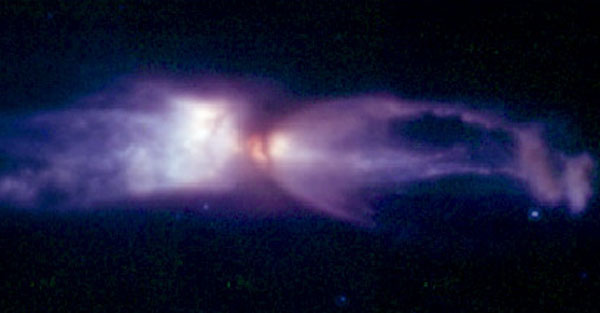
|
Explanation: Not all evolving stars eject gas clouds that look like people. OH231.8+4.2 was a star much like our Sun that ran out of nuclear fuel to fuse in its core. It has therefore entered the planetary nebula phase, where it throws off its outer atmosphere into space leaving a core that will become a white dwarf star. Every Sun-like star creates a different planetary nebula though, and OH231.8+4.2's looks eerily like a person! Spectacular jets of streaming gas can be seen in this recently released photograph by the Hubble Space Telescope. The gas cloud has been dubbed the Rotten Egg Planetary Nebula because it contains unusually high amounts of sulfur, an element that, when combined with other elements, can smell like a rotten egg. This young planetary nebula will likely change its appearance over the next few thousand years and eventually disperse.
|
January February March April May June July August September October November December |
| ||||||||||||||||||||||||||||||||||||||||||||||||
NASA Web Site Statements, Warnings, and Disclaimers
NASA Official: Jay Norris. Specific rights apply.
A service of: LHEA at NASA / GSFC
& Michigan Tech. U.
Based on Astronomy Picture
Of the Day
Publications with keywords: planetary nebula
Publications with words: planetary nebula
See also:
- APOD: 2025 August 31 B NGC 7027: The Pillow Planetary Nebula
- APOD: 2025 August 22 B A Tale of Two Nebulae
- APOD: 2025 August 5 B NGC 6072: A Complex Planetary Nebula from Webb
- APOD: 2025 July 29 B A Helix Nebula Deep Field
- APOD: 2025 July 13 B Planetary Nebula Mz3: The Ant Nebula
- APOD: 2025 June 9 B Between Scylla and Charybdis: A Double Cosmic Discovery
- APOD: 2025 May 14 B NGC 1360: The Robins Egg Nebula
